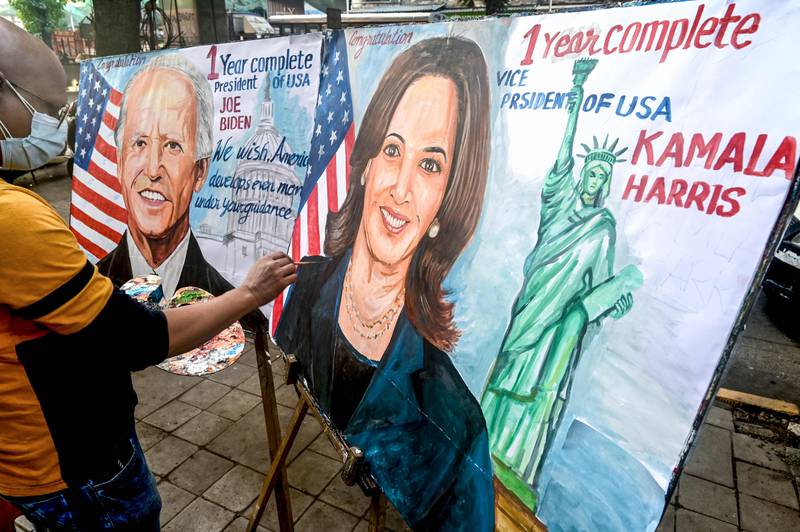United States: When US Vice President Kamala Harris was sworn into office a year ago, women across the globe were watching, many of them wearing her trademark string of pearls, Converse high-tops and purple, a nod to the suffragette movement.
The first woman, the first black person and the first South Asian to ever take the oath, many saw themselves represented in Ms Harris, who is one heartbeat away from the highest office in the land.
The former senator assumed office alongside her boss, President Joe Biden, weeks after a mob of Donald Trump supporters staged an insurrection at the Capitol building. The country was in the grip of the Covid-19 pandemic and millions were out of work.
“It’s tough for any vice president to shine — even in the best of times. And these aren’t the best of times,” Roy Neel, chief of staff for former vice president Al Gore, told The Associated Press.
“You not only serve at the pleasure of the president … but there’s a limit to how much you can do to take the lead role on the major issue of the day, whatever that is, and to go out and look like you’re killing it.”
Ms Harris’s first year has not been an easy one. As Mr Biden’s second in command, she was given the task of pushing for voting rights, immigration reform and women’s rights.
While Mr Biden did secure a $1.9 trillion economic stimulus bill aimed at hastening the US recovery from the pandemic, the Build Back Better plan appears dead in the water amid infighting in the Democratic Party.
Compared to an American football game, Ms Harris has three quarters left. A lot can happen, but only if she stops getting tackled.
In promoting voting rights, Ms Harris faces a growing white-nationalist movement, Mr Trump peddling false claims of voter fraud, Georgia as well as other states enacting voter laws that will make it harder for some people to vote, and a Senate stacked against her.


